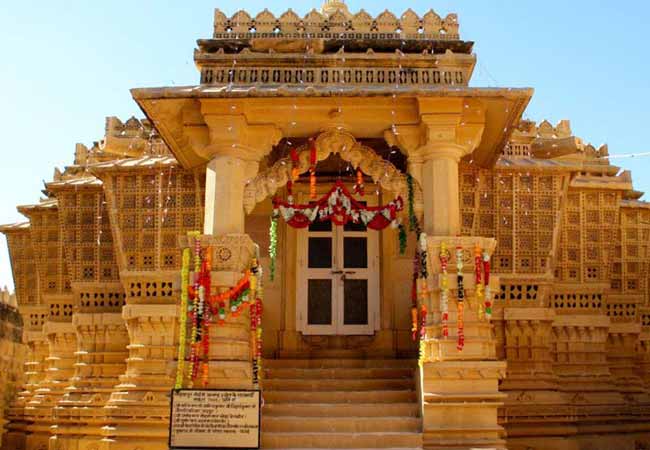Jain Temples of Jaisalmer: A Testament to Timeless Devotion and Architecture
Nestled within the majestic Jaisalmer Fort in Rajasthan, the Jain Temples of Jaisalmer are a striking example of religious devotion, architectural brilliance, and historical depth. Dating back to the 12th and 15th centuries, these temples are not only sacred places of worship for the Jain community but also architectural marvels that continue to attract tourists, historians, and spiritual seekers from across the globe.
There are seven interconnected temples within the Jaisalmer Fort complex, each dedicated to different Jain Tirthankaras. Among the most revered is the temple dedicated to Rishabhdev (Adinath), the first Tirthankara, and another to Shantinath, the 16th Tirthankara. These temples were constructed by wealthy Jain merchants during a time when Jaisalmer was a flourishing trade hub on the ancient Silk Route. The prosperity of the region allowed for generous patronage of the arts, which is evident in the intricate craftsmanship on display.
The architecture of the Jain temples in Jaisalmer is distinctly Dilwara-style, named after the famous Jain temples on Mount Abu. The temples are built from golden-yellow sandstone, which gives them a warm, honey-colored glow, particularly during sunrise and sunset. The interiors are richly adorned with exquisite carvings, delicate latticework (jalis), and finely sculpted pillars and ceilings. Every inch of the stone surface inside these temples showcases ornate motifs, floral patterns, dancing figures, and mythological scenes—all carved with remarkable precision.
What sets these temples apart is the fusion of spiritual serenity and artistic expression. Despite their grandeur, the temples maintain an aura of peace and introspection. The sanctums are often lit by natural light filtering through finely carved windows, creating a mystical ambiance that enhances the spiritual experience.
The temples also house ancient manuscripts and artifacts, preserved in a small museum within the complex. These relics offer insights into Jain philosophy, history, and the rich cultural tapestry of the region.
Visitors must follow certain rules when entering the temples—footwear is not allowed, and photography may be restricted in certain areas. It’s also important to dress modestly as a sign of respect to the sanctity of the space.
Today, the Jain Temples of Jaisalmer stand as a proud reminder of India’s rich religious heritage and artistic legacy. They are not just places of worship but living monuments that reflect centuries of devotion, artistic achievement, and the timeless values of non-violence and truth that Jainism upholds.
For anyone traveling to Jaisalmer, a visit to these temples is a must—not just to witness their beauty, but to experience the deep spiritual history that resonates through their golden walls.
Let me know if you’d like it in a different format or tailored for a specific purpose (e.g., blog post, travel guide, brochure).
